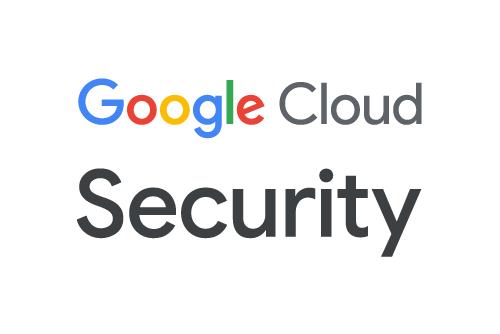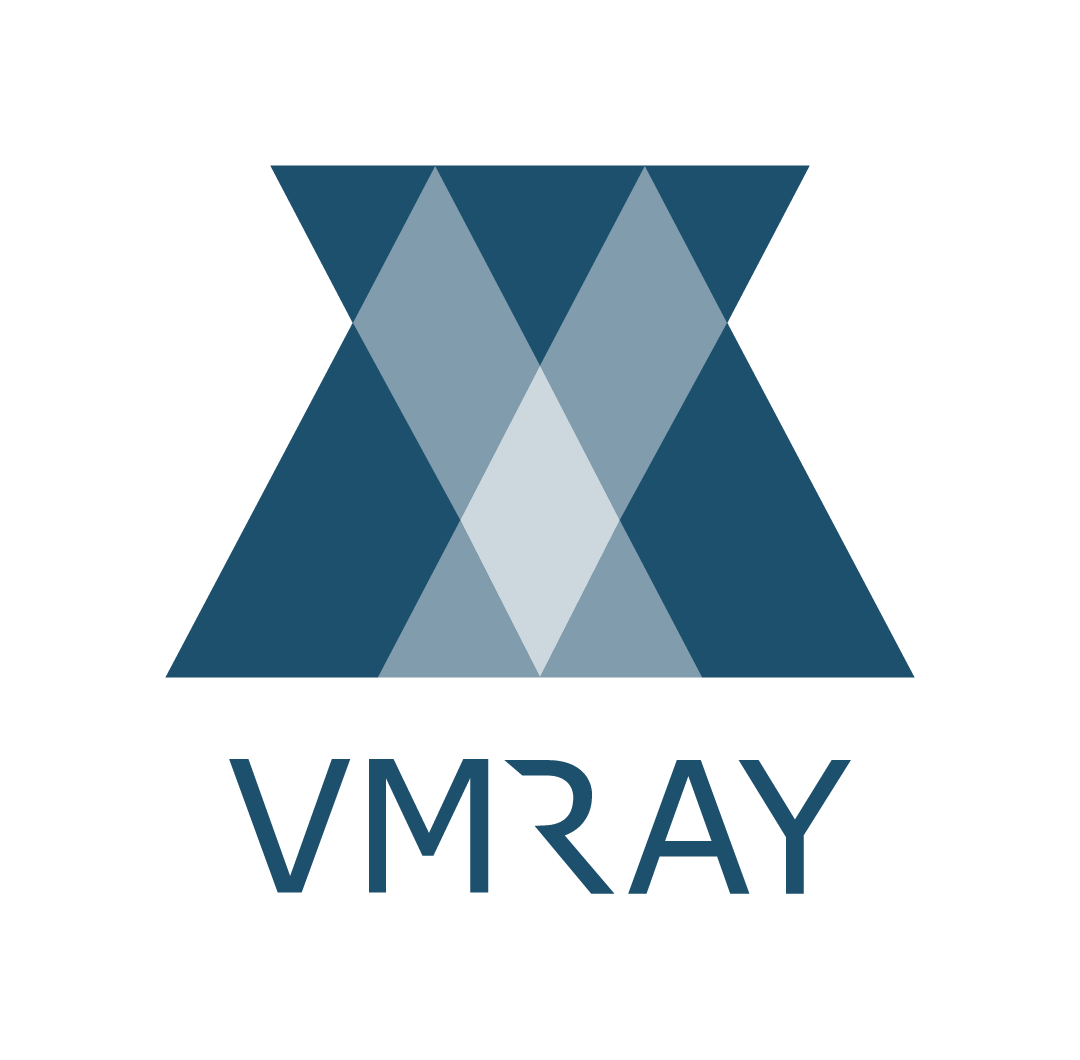7:30 am - 9:00 am
ET
12:30 pm - 2:00 pm UTC | In-Person and Streaming Live Online Registration |
9:00 am - 9:15 am
ET
2:00 pm - 2:15 pm UTC | In-Person and Streaming Live Online Day 1 Opening Remarks |
9:15 am - 10:00 am
ET
2:15 pm - 3:00 pm UTC | In-Person and Streaming Live Online Keynote: The Anticipatory Approach: Actionable (not Reactionable) Cyber Threat Intelligence Anticipatory Intelligence is a multi-domain approach to anticipating threats and opportunities emerging from the world’s increasingly complex security environment. A sharply improved ability to grasp the forces shaping complex emergent security issues arms decision makers with perhaps the most important asset of all: improved skill in designing strategies of resilience that capitalize on strengths and opportunities in the current cyber landscape while successfully mitigating critical risks. |
10:00 am - 10:15 am
ET
3:00 pm - 3:15 pm UTC | In-Person and Streaming Live Online Break |
10:00 am - 12:00 pm
ET
3:00 pm - 5:00 pm UTC | 1:1 and small group coaching sessions | In-Person Only Coaching Sessions Day 1 Personalized 20-minute 1:1 and small group coaching sessions to identify workplace stressors and how to address them. These expert-led sessions focus on identifying the root causes of stress and creating actionable solutions to support professional growth and resilience. |
10:15 am - 10:50 am
ET
3:15 pm - 3:50 pm UTC | New2CTI | Virtual Track #2 Ransomware Syndicates: Cartels or Twisted Tech Unicorns? Ransomware syndicates have evolved into entities that closely resemble the agility and innovation of tech unicorns, rather than traditional organized crime cartels. These groups have adeptly merged cutting-edge technological prowess with a complex psychological framework, employing a sophisticated business mindset alongside morally ambiguous justifications for their activities. Their operations, characterized by strategic depth and manipulative tactics, challenge conventional cybersecurity defenses, calling for an in-depth exploration of their psychological warfare and the intricacies behind their seemingly legitimate business facades. This nuanced blend of strategy and psychology underscores the urgent need for a paradigm shift in understanding and combating ransomware threats.
In this presentation, we navigate the shadowy realms of ransomware groups, contrasting their operations and mentality with established business and social psychology principles, notably those articulated by Elliot Aronson. This talk uniquely dissects the business sophistication and tactical rationalization utilized by cybercriminal factions.
In confronting ransomware, it's essential to recognize that technical defenses alone are insufficient. These cyber syndicates select their targets with a discerning eye, influenced not just by potential vulnerabilities but also by strategic value and psychological impact. Acknowledging law enforcement's recent strides in disrupting ransomware operations, such as Lockbit and Black Cat, adds a critical layer to our understanding of ransomware risk. These efforts illuminate the adaptability and resilience of ransomware groups, who respond to legal pressures with evolved tactics and enhanced target selection strategies. This changing landscape underscores the need for a risk assessment model that not only captures the technical and psychological dimensions of ransomware threats but also remains agile in the face of these groups' tactical shifts in response to law enforcement actions.
Actionable presentation take-aways:
• explore how some ransomware groups navigate a blend of business acumen and ethical gymnastics, portraying themselves variously as post-paid pentesters, hacktivists, or reluctant culprits forced into action by a widespread lack of cybersecurity.
• Analyze pertinent case studies, revealing their strategies across operations, negotiations, and PR. We'll also probe why some ransomware entities target seemingly non-lucrative victims, like schools and non-profits.
• Learn mitigation and negotiation strategies and explore if traditional anti-crime and anti-terrorism strategies can be modified or reimagined to confront ransomware criminals effectively. This includes assessing if approaches for physical-world entities are viable against digital domain criminals. |
10:15 am - 10:50 am
ET
3:15 pm - 3:50 pm UTC | In-Person and Streaming Live Online Beyond the FOMO: Expanding Horizons for Cyber Threat Intelligence Analysts As mid-career analysts consider their long-term career paths, they often face the challenge of advancing while maintaining the thrill of active engagement in cyber threat intelligence (CTI). This presentation will delve into the diverse trajectories available to CTI analysts, emphasizing roles that allow for both professional growth and continued involvement in the dynamic landscape of cyber threats.
We will explore various career options, from staying as an individual contributor or subject matter expert—perfect for those who want to remain close to the intricacies of threat actor activities—to stepping into leadership positions such as intelligence team lead, incident response lead, policy advisor, resiliency lead, and risk management specialist. For those aiming higher, we’ll discuss the transition to roles like Chief Information Security Officer (CISO), where strategic oversight and influence become paramount.
Key to this discussion will be the skills and competencies needed for each path, highlighting how a foundation in CTI is invaluable across various roles. Attendees will gain practical insights into how CTI informs incident response, shapes policy advocacy, enhances resiliency planning, and aids risk management. By understanding how intelligence interacts with these fields, analysts can effectively lead an entire information security team.
While the goal is not to drive analysts away from CTI, the aim is to cultivate a new perspective on FOMO—the "fear of missing out" on the broader opportunities available when one has a solid CTI foundation. Attendees will leave with a fresh outlook on their career options, ready to explore how they can leverage their expertise in ways they may not have previously considered. Let’s discover how to embrace new possibilities while still cherishing the exciting world of cyber threat intelligence. |
10:15 am - 12:05 pm
ET
3:15 pm - 5:05 pm UTC | In-Person Only WORKSHOP | Threat Hunting and Criminal Infrastructure Analysis Workshop | SANS FOR589 Come join us as we walk you through a hands-on workshop that dives into the complexities of cybercrime infrastructure. You'll explore the essential types of infrastructure indicators—Atomic, Behavioral, and Computed—and learn how they can be used to uncover and understand cybercrime activities. Discover how domains, IP addresses, email accounts and more play a crucial role as Atomic Indicators, and gain insight into the significance of Infrastructure-as-a-Service (IaaS) in identifying the ownership of these indicators. Through practical exercises, you'll apply a sophisticated fingerprinting methodology to not just identify, but predict cybercrime behaviors, enhancing your ability to analyze and combat cyber threats. This workshop is ideal for those looking to deepen their understanding of cybercrime analysis, investigations, and operations in a real-world setting. 1. Learning objectives: - How to profile the technical infrastructure of a cybercriminal site, such as a malware Command & Control (C2) domain, phishing page, or forum.
- How to profile and interdict the technical attack infrastructure of cybercrime campaigns.
- How to pivot and uncover additional cybercriminal infrastructure.
2. Pre-req KnowledgeThis workshop is a series of exercises aimed toward cybercrime investigators or researchers who need to increase their ability to analyze criminal infrastructure. As such, a problem-solving attitude, and a willingness to explore new techniques for investigating cybercrime will help participants make the most of the practical exercises. We will provide registrants with a download link for a limited FOR589 Cybercrime Research & Operations Machine (CROM) VM that will contain the materials required for this workshop. System RequirementsImportant! Bring your own system configured according to these instructions. A properly configured system is required to fully participate in this workshop. If you do not carefully read and follow these instructions, you will not be able to fully participate in hands-on exercises in your workshop. Therefore, please arrive with a system meeting all the specified requirements. Back up your system before the workshop. Better yet, use a system without any sensitive/critical data. SANS is not responsible for your system or data. MANDATORY FOR589 WORKSHOP SYSTEM HARDWARE REQUIREMENTS - CPU: 64-bit Intel i5/i7 (4th generation+) processor, x64 bit 2.0+ GHz processor, or more recent processor is mandatory for this workshop. (Important - Please Read: a 64-bit system processor is mandatory.)
- CRITICAL NOTE: Apple Silicon devices cannot perform the necessary virtualization and therefore cannot in any way be used for this workshop.
- It is critical that your CPU and operating system support 64-bit so that our 64-bit guest virtual machine will run on your laptop.
- BIOS settings must be set to enable virtualization technology, such as "Intel-VT."
- Be certain that you can access your BIOS if it is password-protected in case changes are necessary. Test it!
- 16 gigabytes (GB) of RAM or higher is mandatory for this workshop. (Important - Please Read: 16 GB of RAM or higher of RAM is mandatory and minimum.)
- USB 3.0 Type-A port is required. At least one open and working USB 3.0 Type-A port is required. (A Type-C to Type-A adapter may be necessary for newer laptops.) (Note: Some endpoint protection software prevents the use of USB devices, so test your system with a USB drive before the workshop to ensure that you can load the workshop data.)
- 150 GB of free space on your system hard drive is critical to host the VMs we distribute.
- Local administrator access is absolutely required. Don't let your IT team tell you otherwise. If your company will not permit this access for the duration of the workshop, then you should plan to bring a different laptop.
- Wireless 802.11 capability
MANDATORY FOR589 WORKSHOP HOST CONFIGURATION AND SOFTWARE REQUIREMENTS - Your host operating system must be the latest version of Windows 10, Windows 11, or macOS 10.15.x or newer.
- Fully update your host operating system prior to the workshop to ensure you have the right drivers and patches installed.
- Linux hosts are not supported in the workshop due to their numerous variations. If you choose to use Linux as your host, you are solely responsible for configuring it to work with the workshop materials and/or VMs. Please note: It is necessary to fully update your host operating system prior to the workshop to ensure that you have the right drivers and patches installed to utilize the latest USB 3.0 devices.
- You should ensure that antivirus or endpoint protection software is disabled, fully removed, or that you have the administrative privileges to do so. Many of our workshops require full administrative access to the operating system and these products can prevent you from completing the labs.
- Any filtering of egress traffic may prevent accomplishing the labs in your workshop. Firewalls should be disabled, or you must have the administrative privileges to disable it.
PLEASE INSTALL THE FOLLOWING SOFTWARE PRIOR TO THE WORKSHOP: - Download and install VMware Workstation Pro 16.2.X+ or VMware Player
16.2.X+ (for Windows 10 hosts), VMware Workstation Pro 17.0.0+ or VMware Player 17.0.0+ (for Windows 11 hosts), or VMWare Fusion Pro 12.2+ or VMware Fusion Player 11.5+ (for macOS hosts) prior to the workshop beginning. If you do not own a licensed copy of VMware Workstation Pro or VMware Fusion Pro, you can download a free 30-day trial copy from VMware. VMware will send you a time-limited serial number if you register for the trial at their website. Also note that VMware Workstation Player offers fewer features than VMware Workstation Pro. For those with Windows host systems, Workstation Pro is recommended for a more seamless student experience. - On Windows hosts, VMware products might not coexist with the Hyper-V hypervisor. For the best experience, ensure VMware can boot a virtual machine. This may require disabling Hyper-V. Instructions for disabling Hyper-V, Device Guard, and Credential Guard are contained in the setup documentation that accompanies your workshop materials.
- Microsoft Office (any version) or OpenOffice installed on your host. Note that you can download Office Trial Software online (free for 30 days).
- Download and install VMware Workstation Pro 15.5.X+, VMware Player 15.5.X+, or Fusion 11.5+ on your system prior to the start of the workshop. If you do not
own a licensed copy of VMware Workstation or Fusion, you can download a free 30-day trial copy from VMware. VMware will send you a time-limited serial number if you register for the trial on its website. - Download and install 7Zip (for Windows Hosts) or Keka (macOS).
Your media will be delivered via a VM download link. The media files for the workshop can be large. You need to allow plenty of time for the download to complete. Internet connections and speed vary greatly and are dependent on many different factors. Therefore, it is not possible to give an estimate of the length of time it will take to download your materials. Please start your media downloads as soon you get the link. You will need your media immediately when the workshop begins. Waiting until the workshop starts to begin your download could result in a high probability of failure. Additionally, this FOR589 CROM Workshop VM uses an electronic workbook contained within the VM. We have found that a second monitor and/or a tablet device can be useful to keep the workshop materials visible while the instructor is presenting or while you are working on lab exercises. If you have additional questions about the laptop specifications, please contact support. |
10:55 am - 11:30 am
ET
3:55 pm - 4:30 pm UTC | New2CTI | Virtual Track #2 Dissecting the Cicada - In the shadow of the Black Cat In the end of June 2024, a new enigmatic ransomware-as-a-service group emerged under the name Cicada 3301. They have apparently stolen the name and branding from a cryptographic puzzle to add mystery to their name. Since the start, this ransomware has added numerous victims to their onion site and analysis of their attacks has shown several links to the notorious ransomware group BlackCat/ALPHV, that was dissolved in a multi-million exit scam after the group’s infrastructure was hacked by international law enforcement.
This presentation will contain technical and non-technical evidence suggestion a link between Cicada and BlackCat, such as
- In-depth malware analysis of both ESXi and Windows ransomware used by Cicada and similarities to the ALPHV ransomware
- Tools, Techniques and Procedures (TTP) used in ransomware attacks investigated by Truesec, comparing Cicada 3301 incidents to BlackCat/ALPHV
- Connections to a possible access broker, responsible for the Brutus botnet
- Command and control infrastructure used by Cicada 3301 and how it is linked BlackCat
- Tracing profiles on Russian cybercrime forums related to Cicada 3301 |
10:55 am - 11:30 am
ET
3:55 pm - 4:30 pm UTC | In-Person and Streaming Live Online ONNX Store: The Rise and Fall of a Phishing-as-a-Service Platform Targeting Financial Institutions In February 2024, EclecticIQ analysts identified a rebranded Phishing-as-a-Service (PhaaS) platform called ONNX Store, which originated from the Caffeine Phishing Kit first detected by Mandiant in 2022. ONNX Store’s malicious users primarily targeted financial institutions using QR code-based phishing techniques, 2FA bypass methods and operated through Telegram bots to streamline its services for cybercriminals. The platform's operations were disrupted in June 2024 following the attribution of its creator, MRxC0DER.
This presentation will detail the development and operations of ONNX Store, the role of cyber threat intelligence (CTI) in its disruption, and the impact of attribution on financially motivated cybercriminal activities.
Key Takeaways:
1. PhaaS Model Overview: An explanation of the Phishing-as-a-Service model and its relevance to the financial sector, using ONNX Store as a case study.
2. Technical Details: Analysis of the phishing methods employed by ONNX Store, including QR code phishing and 2FA bypass, and their implications for cybersecurity defenses.
3. CTI and Attribution: Discussion on how cyber threat intelligence contributed to the identification and disruption of ONNX Store, and the significance of attribution in countering cybercrime.
4. Practical Recommendations: Guidelines for financial institutions on monitoring and defending against similar PhaaS threats, focusing on technical defenses and proactive threat identification.
What Attendees Can Expect to Learn:
• Understanding of the Phishing-as-a-Service (PhaaS) Model: The abstract outlines that attendees will learn about the PhaaS model, specifically how ONNX Store operated and targeted financial institutions using phishing techniques.
• Insight into ONNX Store’s Operations: The presentation will cover the technical aspects of ONNX Store, including its phishing methods like QR code-based phishing and 2FA bypass techniques. This provides attendees with an in-depth understanding of the tools and methodologies used by the financially motivated threat actors.
• Role of Cyber Threat Intelligence (CTI) and Attribution: Attendees will learn how CTI was used to attribute and disrupt the operations of ONNX Store, showcasing the practical application of threat intelligence in real-world scenarios.
Highlighted Actionable Takeaways:
• Monitoring and Defense Strategies: The abstract provides actionable guidance for financial institutions on how to monitor and defend against similar PhaaS platforms, focusing on technical defenses and proactive threat hunting.
• Importance of Attribution: It highlights the significance of attribution in deterring and disrupting cybercriminal activities, which is a key lesson for cybersecurity professionals. |
11:35 am - 2:05 pm
ET
4:35 pm - 7:05 pm UTC | New2CTI | Virtual Track #2 But Mom, I Need To Spend More Time on Social Media! (Bridging CTI and Fraud - Understanding Social Media Cyber Threat Landscape and Beyond) Jurgen Visser, Head of Cyber Defense and Enterprise Security, GoTo Group We would like to highlight how a mature CTI program could be used to help the Risk and Fraud team, especially on the social media front. We will talk about how the social media threat landscape is impacting our millions of customers in Indonesia, coming from one of the biggest IT companies in the country. While the US has its fair share of fake call center problems, Indonesia has social media impersonation problems.
In the presentation, we are planning to talk about:
- Why our environment is unique (combination of a large IT company in Indonesia), which may be a good consideration for any company that is already in the region or wants to expand.
- How social media is used by customers.
- How CTI may help the social media impersonation challenges.
- What we observed happening on the social media front. This is going to be a real world study case on the cases happening over here. Such as: impersonating over popular messaging apps and social media platforms (WhatsApp, Instagram, and Twitter), social media comment hijacking, Google Maps fraud, fake job postings, etc.
- Some other contributing factors that we observed to be happening outside of social media in Indonesia, such as Infostealer problems, etc.
- Last but not least, our recommendation on how CTI can help, especially in terms of bridging CTI and Fraud function. |
11:35 am - 12:05 pm
ET
4:35 pm - 5:05 pm UTC | In-Person and Streaming Live Online Making CTI Cool!: Methods for Teaching Cyber Threat Intelligence Through Gaming In this talk, Bryan Quillen and Jibby Saetang will share their unique and innovative method of using a custom-built game to teach Cyber Threat Intelligence (CTI) to high school students, a demographic typically seen as too young for such advanced topics.
Bryan, a high school teacher in Louisville, KY, has breathed life into his cybersecurity classroom by using a CTI-focused game. His students aren’t just learning abstract concepts; they’re diving into the stories behind cyber attacks—who the attackers are, why they act, and how they operate. The opportunity to use the data to engage with the human aspect of cybersecurity has fostered a real passion for the subject.
Jibby Saetang, a former watch repairer turned security researcher, shares a similar journey. Jibby also fell in love with cybersecurity through the captivating narratives in the same game, discovering that understanding the purpose and context behind attacks can transform how people view the cyber world.
Together, they are collaborating with Bryan’s students to help them develop their own CTI-focused game. By approaching the content from this angle, these high schoolers are mastering concepts like the MITRE ATT&CK framework, the Diamond Model, and threat attribution—skills that are often considered beyond beginner level.
The key to their success is focusing on the stories behind the data. By understanding the technical side of cyber attacks as they investigate the ethical and personal implications, Bryan’s students have developed a genuine curiosity about cybersecurity that they will be able to carry with them well after they leave his class.
|
12:05 pm - 1:30 pm
ET
5:05 pm - 6:30 pm UTC | In-Person and Streaming Live Online Lunch |
1:30 pm - 2:05 pm
ET
6:30 pm - 7:05 pm UTC | New2CTI | Virtual Track #2 Everybody Wants to Rule the World (of Data) John Stoner, Senior Security Consultant, Google Cloud - Public Sector John Stoner, Global Principal Security Strategist, Google Cloud Everyone in cybersecurity craves it, in fact, they Just Can’t Get Enough - DATA, that is. But the relentless pursuit of aggregating every byte into the security stack often leaves us overlooking the essentials. Before you break out your vintage Cure albums and lament like it’s 10:15 Saturday Night, let's pause and ask: what data do you actually need to answer those burning Priority Intelligence Requirements (PIRs)?
In this 30-minute session, the two John Stoners will guide you through the World Where You Live of data, with a focus on Cyber Threat Intelligence (CTI) use cases. We'll explore how data needs to be A Means to an End, some of the common mistakes that are made and as well as dissect the importance of normalized and correlated data, and take a look at Volt Typhoon as a use case.
Come along as The Passenger as we share our insights in the face of overwhelming data chaos.
Leave with a newfound appreciation for the power of data done right, and the knowledge to navigate the complexities of the CTI landscape. |
1:30 pm - 2:05 pm
ET
6:30 pm - 7:05 pm UTC | In-Person and Streaming Live Online From Threat Intelligence to Detection Engineering: A Case Study on Identifying Gaps in Detection and Enhancing CTI Value for the Organization This presentation will explore how Cyber Threat Intelligence (CTI) can be strategically utilized to enhance detection engineering, focusing on identifying and addressing detection gaps within an organization. Through a real-world case study, the session will illustrate how CTI can not only pinpoint weaknesses in detection systems but also provide actionable strategies that enhance the overall security posture. The presentation will emphasize how to translate threat intelligence into detection enhancements, offering practical insights for teams looking to maximize the organizational value of CTI.
Key Takeaways:
• A detailed case study showcasing how CTI was leveraged to identify detection gaps in an operational environment.
• Practical approaches for integrating threat intelligence with detection engineering to optimize security measures and workflows.
• A step-by-step process for converting CTI insights into actionable detection strategies that enhance security operations.
• Lessons learned from applying CTI to continuously improve detection systems and increase its value for the organization. |
1:30 pm - 2:30 pm
ET
6:30 pm - 7:30 pm UTC | 1:1 and small group coaching sessions | In-Person Only Coaching Sessions Day 1 - continued Personalized 20-minute 1:1 and small group coaching sessions to identify workplace stressors and how to address them. These expert-led sessions focus on identifying the root causes of stress and creating actionable solutions to support professional growth and resilience. |
2:10 pm - 2:45 pm
ET
7:10 pm - 7:45 pm UTC | New2CTI | Virtual Track #2 The Secret Life of Forgotten Malware C2 Eli Woodward, Cyber Threat Intelligence Analyst, Early Warning Services Building upon the seminal work of David Bianco's 'Pyramid of Pain,' this talk aims to cast a new light on the threat posed by custom malware domains and the lasting value they offer to both scammers and researchers. It is hoped that industry professionals will come to place a special emphasis on custom malware domains, recognizing their persistent and long-term value to both attackers and defenders.
Almost daily, we encounter new headlines and blog posts from various researchers and intelligence vendors, highlighting exploits from APT and crimeware groups that utilize custom domains with clever and unique names, such as Pandorasong. But what happens to these domains after they're publicly named? Do threat actors immediately abandon them? Are they repurposed for future campaigns? And should we continue to monitor these domains in our Threat Intelligence Platforms (TIPs) for intelligence purposes, especially in light of their activities being exposed by open-source intelligence?
This presentation delves into these questions, offering a deep dive from the perspective of a Cyber Threat Intelligence (CTI) analyst and researcher curious about the fate of these domains once they are 'burned.' After spending way too much money and time buying up old domains, observing compromised machines still ‘calling home,’ and identifying who else is vying to purchase these domains, the overlooked world of forgotten malware C2 domains has revealed itself to be incredibly fascinating. |
2:10 pm - 2:45 pm
ET
7:10 pm - 7:45 pm UTC | In-Person and Streaming Live Online Advanced Threat Research Methodologies: Unraveling a Triple-APT Intrusion Threat intelligence research presents a dynamic and challenging landscape where researchers navigate complex investigations. What may start as a straightforward case can rapidly evolve into a sophisticated analysis requiring detailed clustering, precise attribution, and advanced threat-hunting techniques. This session aims to illuminate the technical intricacies of our threat research methodology and provide fellow researchers with practical insights to effectively address such a daunting task. To illustrate our methodologies, we will present a use case of an investigation of a triple nation state APT cyber attack targeting the government sector. In the presentation, we will dive into our clustering methodology, demonstrating how it helps untangle the challenges of multiple kill chains. Our attribution methodology, based on the diamond model, allows us to link clusters to specific nation-state actors, particularly those operating on behalf of Chinese interests. Finally, we'll highlight our intelligence-driven hunting approach and how it has exposed the alarming extent of China's influence over another nation's government entities. By the end of the session, participants will gain comprehensive insights into the inner works of threat research. Through detailed case studies, attendees will acquire practical methodologies for overcoming similar challenges in their own investigations. We will provide actionable strategies and enhance the understanding of the threat intelligence landscape, equipping researchers with the tools to address advanced cyber threats more effectively.
|
2:45 pm - 3:10 pm
ET
7:45 pm - 8:10 pm UTC | In-Person and Streaming Live Online Break |
3:10 pm - 3:45 pm
ET
8:10 pm - 8:45 pm UTC | New2CTI | Virtual Track #2 Building the CTI Brand: A Path to Success A strong cyber threat intelligence (CTI) brand is essential for maturing your CTI program. A mature CTI brand not only secures internal trust and support but also attracts external partnerships and resources. Highlighting tangible benefits of CTI, such as reduced risk exposure, enhanced threat detection, and informed decision-making, helps gain the confidence of key stakeholders.
This presentation explores how a trusted CTI brand can enhance credibility, drive engagement, and support the overall growth of the program. By focusing on brand-building strategies, such as confident communication, engagement with the business, and showcasing successful threat intelligence operations, organizations can position their CTI program as a trusted and essential component of their cybersecurity framework.
In this talk which emphasizes the pivotal role effective collaboration and strong partnerships play in building the CTI brand to gain internal support and enhance external trust and engagement. |
3:10 pm - 3:45 pm
ET
8:10 pm - 8:45 pm UTC | In-Person and Streaming Live Online Building Cyber Threat Resilience with STRAT: A new Methodology for CTI Due to increased sophistication today’s adversaries pose a greater threat to organizations than ever before. To proactively counter this threat we need a deeper system centric approach to defense analysis. We will introduce the System-Centric Threat and Resilience Assessment Tool (STRAT), a novel application of systems thinking and as a method to assess and enhance the resilience of cyber defense postures. By using STRAT, defenders can not only evaluate specific threats but also understand the interconnected nature of system components and their behavior over time, leading to more informed decisions and stronger defenses.
The same principles applied to analyzing threat actors can be used to assess an organization's defensive strategies. Systems thinking enables analysts to visualize feedback loops, identify resilience factors, and anticipate system-wide impacts of adversarial actions.
Takeaways:
Systems Thinking for Cyber Defense – Learn how to apply systems thinking to analyze both defensive postures and adversary behaviors in cybersecurity.
STRAT Methodology Case Study– Understand the key steps of STRAT and how to use it to assess system resilience, identify weaknesses, and develop actionable strategies.
Operationalizing Resilience – Discover how to build resilience into both technology and human factors, ensuring defenses remain adaptable in the face of emerging threats.
Show More
|
3:10 pm - 4:10 pm
ET
8:10 pm - 9:10 pm UTC | 1:1 and small group coaching sessions | In-Person Only Coaching Sessions Day 1 - continued Personalized 20-minute 1:1 and small group coaching sessions to identify workplace stressors and how to address them. These expert-led sessions focus on identifying the root causes of stress and creating actionable solutions to support professional growth and resilience. |
4:00 pm - 4:25 pm
ET
9:00 pm - 9:25 pm UTC | In-Person and Streaming Live Online Immaturity Can Be Fun: Just Not in a CTI Program For the past decade, CTI operations in industry (and government to a lesser degree) have been driven by technology and venture capital. At the root of the problem is the misconception that because cyber threats target computers, the solution to the problem must be more technology. This has driven many corporate consumers into products and services that are misaligned to their needs and has convinced them of value propositions they cannot realize.
The reality is though, that at the root of most failed cyber-intelligence endeavors is a lack of planning and processes; this is complicated by a lack of objective, industry standards. While there are many CTI maturity models available, they are most often tied to particular technologies or services; meaning they lack the breadth and depth necessary to make them broadly applicable to cyber-intelligence programs across industry. The CTI Capability Maturity Model (CTI-CMM) is a new practitioner-led initiative designed to break this cycle and provide a comprehensive, flexible framework that can be applied across industries, independent of specific technologies.
Our talk will explore how this vendor-neutral, community-driven initiative offers a clear and practical approach to assessing the maturity of cyber-intelligence programs. In particular, we’ll address how the CTI-CMM:
- Offers unique value that compliments other models
- Enables teams to broaden their operational scope (potentially securing greater funding)
- Deepens enterprise-wide engagement and appreciation for CTI
- Can be used to develop a practical roadmap for maturing your program |
4:30 pm - 4:40 pm
ET
9:30 pm - 9:40 pm UTC | In-Person and Streaming Live Online Day 1 Wrap-Up |
5:30 pm - 9:30 pm
ET
10:30 pm - 2:30 am UTC | In-Person Only Summit Night In w/ Minute to Win it! - Unwind and connect with fellow attendees over tabletop games, food and drinks, and compete for epic prizes. We’ll be breaking into teams of 6-8 so visit a sponsors table to sign up for an exciting evening! We’ll have prizes for our team that comes in first place and will be giving ONE random Minute 2 Win It player an Apple Watch just for playing! Don’t miss an exciting evening with multiple opportunities to network, win prizes 0and indulge in tasty food and drinks.
Show More
|















.png)







.png)








